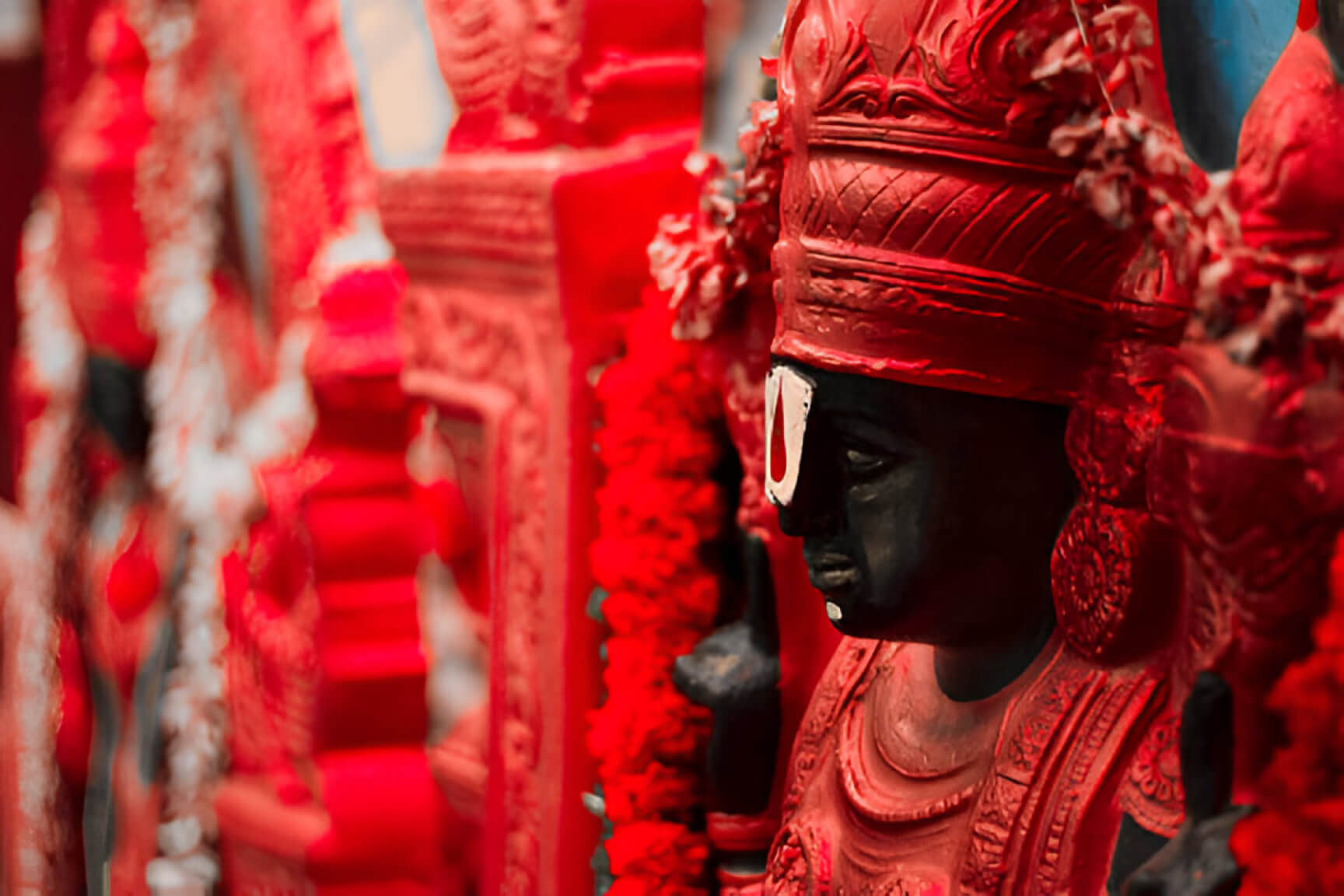
Balaji Venkateswara
The deity of Lord Venkateswara at Tirupati-Tirumala is a form of Lord Vishnu. He is also called Balaji, Srinivasa and Venkatachalapati. It is said that Vishnu appears on earth whenever evil is on the rise and humanity needs to be saved. Lord Venkateswara has thus appeared in the Kali Yuga to offer salvation to humanity and his name means ‘the lord who destroys the sins of people. Thus the temple at Tirumala is considered his heaven on earth, a Kaliyuga Vaikuntham.
The Avatars of Lord Vishnu
Lord Vishnu, the protector and preserver of all creation is a solar god.Among the trinity of Lord Brahma, Lord Vishnu and Lord Shiva, he is the most benign and generous and he is worshipped with joyous hymns and even dancing, the offering of flowers, incense and food. Vishnu is a compassionate and patient deity who always listens to the prayers of his devotees, understands our dilemmas and forgives our sins, offering salvation and mercy.
The sage Bhrigu wrote about Lord Vishnu, “Here is the greatest of the gods. He surpasses others by the most powerful weapons, of kindness and generosity.” And his mythology is given in the Vishnu Purana, Vayu Purana and Bhagavad Purana. The stories of his two most important incarnations are to be found in the epics – of Rama in the Ramayana and of Krishna in the Mahabharata. The Mahabharata also contains the Harivamsa that tells Krishna’s life story and the famous verses of the Bhagavad Gita.
The Gita is in the words of Krishna and this philosophical treatise is one of the most sacred of Hindu writing.
Vishnu descends on earth in many incarnations called avatars and takes the form of a super human being who comes to defend the righteous and defeat evil. As Krishna tells Arjuna in the Mahabharata.
“Whenever righteousness declines,
And unrighteousness holds sway.
Then do I manifest myself in bodily form,
To protect the good, to destroy evil.”
There are ten avatars of Vishnu with mythological stories connected to each of them. These Dasavatars are: (1) Matsya, the fish; (2) Kurma, the tortoise; (3) Varaha, the boar; (4) Narasimha, the man-lion; (5) Vamana, the dwarf; (6) Parashurama, Rama with the battle axe; (7) Rama, the king of Ayodhya and hero of the Ramayana; (8) Krishna, the ruler of Dwarka and hero of the Mahabharata; (9) Gautama Buddha, the founder of Buddhism and (10) Kalki, the avatar yet to come. The two most popular who are worshipped in their own temples are the hero-gods Rama and Krishna
The inclusion of Gautama Buddha as an avatar of Vishnu often puzzles people as the Buddha preached to reform Hinduism, was against the caste system and religious rituals and founded a new religion. Calling him an avatar was an attempt by the Hindu priesthood to include an influential teacher into the pantheon of Hindu gods but it did not really succeed as the Buddha is not worshipped by Hindus. In some lists in the Puranas the Buddha is replaced by Balarama, Krishna’s brother.
Vishnu has a thousand names and the recitation of his Sahasranama is considered an act of great devotion. He is Hari, the saviour; Keshava, long haired, Narayan, the supreme being; Pitambara, wearing golden garments; Achyuta, the imperishable; Ananta, the endless; Chaturbhuja, the four armed; Hrishikesha, the lord of the senses; Janardhana, the one worshipped by all; and Purushottama, the ideal and supreme spirit.
Vishnu’s consorts are the goddesses Lakshmi or Sridevi, the goddess of wealth and Bhudevi or Prithvi, the earth goddess. He is a handsome kinglike god, always clad in golden garments, a garland of lotuses and much jewellery, including a high crown. He wears the Syamantaka jewel on his wrist and the Kaustabha gem on his chest. The Vishnu image, called Sri Vigraha is of a handsome kinglike figure with a blue skin, the colour of clouds. He has four hands that carry the shankha, a conch shell; chakra, a discus; gada, a mace and padma, a lotus. The conch shell is called Panchajanya, the chakra is the sudarshana chakra and the mace is called Kaumodiki. Vishnu’s heaven is called Vaikuntha and his vehicle is the mythical half human, half bird called Garuda. In his sayana form he is shown lying on the coils of the serpent Sheshanag, floating on the waters of Ananta, the primeval ocean.
The Divya Desam pilgrimages of Lord Vishnu
The Venkateswara Temple at Tirumala is one of the most important of the 108 Divya Desam shrines. The Divya Desams are the most sacred temples dedicated to Vishnu and include the temples of Mathura, Badrinath, Dwarka, Ayodhya, Madurai, Kanchipuram, Thanjavur, Kanya Kumari, Srirangam and of course Tirupati-Tirumala. The Divya Desams are the temples whose praises were sung by the Vaishnava poet-saints of Tamil Nadu called Alwars. Many of them mention the Lord of Vengadam, another name of Lord Venkateswara.
The Alwars were part of the religious movement called Bhakti that swept across India between the 6th and 9th century CE. It was led by poets who said we were all equal and preached a personal devotion to god. It was a rebellion against the caste system which often kept people belonging to the lower castes from entering temples. Also in the temples the religious rituals were controlled by Brahmins who exploited people. The Bhakti saints said we did not need expensive rituals to reach god. They spoke of a personal devotion that brought the gods in direct touch with their devotees and to worship a deity all you needed was a handful of flowers and a heart filled with devotion.
Alwar Saints
This mystical, ‘god intoxicated’ poetry of the Alwar saints was the voice of the powerless. It spoke directly to God who was a friend and guide and showed love and mercy. As the poet Tirumalisai wrote,
“I have not been born in one of the twice born castes,
I am not learned in the four Vedas.
I have not conquered the five senses,
Save for Thy shining feet alone, O Lord, I have no other hold.”
This people’s movement was led by the Alwars who wrote verses in praise of Vishnu and the Nayanars who wrote in praise of Shiva. There were twelve Alwars and sixty three Nayanar saints and their poems are still sung in the temples today. They wrote in Tamil instead of Sanskrit so that everyone could understand the poetry and many of them belonged to lower castes.
Among the Alwar poets were Appar, Tiruppan, Nammalvar, Periyalvar and the poetess Andal. Ten of the twelve Alwar saints visited Tirumala and describe the hills, jungles, streams and waterfalls of the hills. The songs of the Alwars praising Lord Venkateswara are called ‘Naalariya Divya Prabandham’ and they are sung in the temple every day.
Later there were Vishnu devotees in the north who led the Bhakti movement like Kabir, Guru Nanak, the poetess Meerabai, Jayadeva, Surdas and Tulsidas. These great Bhakti saints gave back the worship of god to the people. For them there was one god, who could be called by any name and you attained the knowledge of the divine by a surrendering to an ecstatic, mystical love.
Famous saints & teachers connected to the temple
The most important philosopher connected to Tirupati-Tirumala is the Vaishnava preacher Ramanujacharya, founder of the Sri Vaishnava School who lived at Srirangam. He arrived here in the 11th century and organised the temple and laid down the systems of worship and even designed the gardens around the shrine. At that time the image did not carry the conch or the chakra, so there was controversy about whether it was an image of Vishnu or Shiva. Ramanuja established that it was a Vishnu image. A shrine dedicated to him stands near the Tirumamani Mandapam and his image receives worship during the Adhyayanotsavam festival.
Sri Tallapaka Annamacharya was the official poet of the temple in the 15th century who is said to have composed around thirty six thousand keertana songs in praise of Lord Venkateshwara, though only twelve thousand of them have survived. These hymns have been preserved, carved on copper plates. He opposed the caste system and criticised the rejection faced by the untouchable castes.
Tarikonda Venkamamba was a poetess of the 18th century who composed innumerable songs in praise of Lord Venkateswara. The famous 19th century composer of Carnatic music, Tyagaraja was another poet who sang in praise of the deity and he composed the Tirupati Venkateswara Kritis that are sung till today.
As historian and devotee Nanditha Krishna writes, “In Balaji-Venkatesha, the devotee sees his personal God, be it Shiva or Vishnu, Skanda or Shakti. There can be no greater proof of the universal nature of the lord than that he combines within himself the main deities of Hinduism.”
Find Your Perfect Read
Explore More
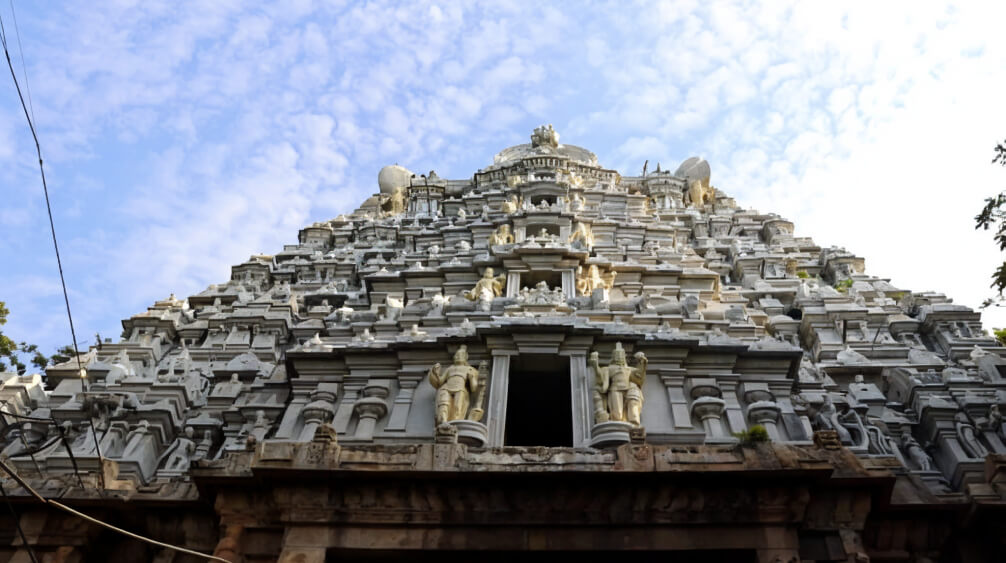
Tirupati-Tirumala
Daiwik Hotels welcomes you to one of the most famous Hindu pilgrimages in India.
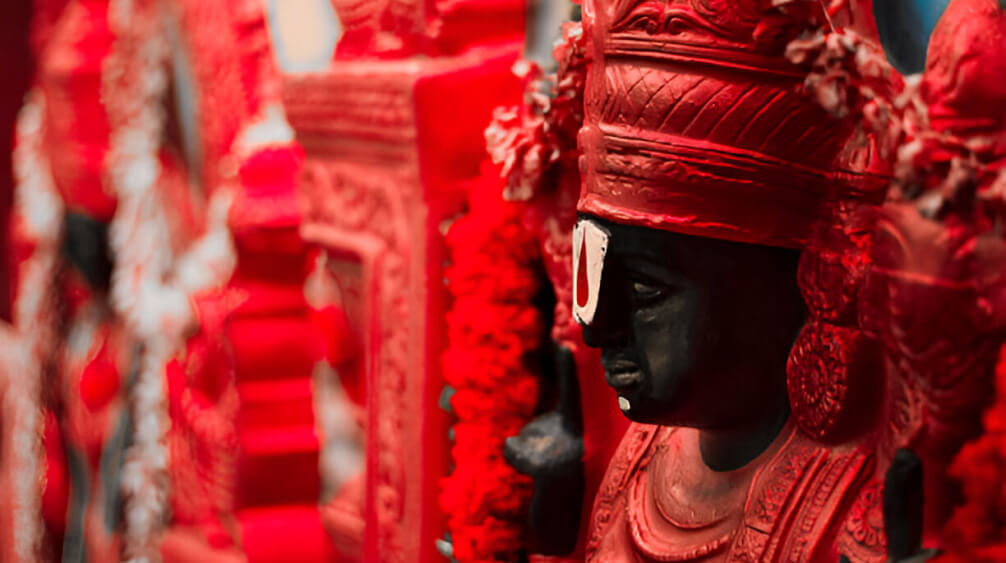
Balaji Venkateswara
The deity of Lord Venkateswara at Tirupati-Tirumala is a form of Lord Vishnu.
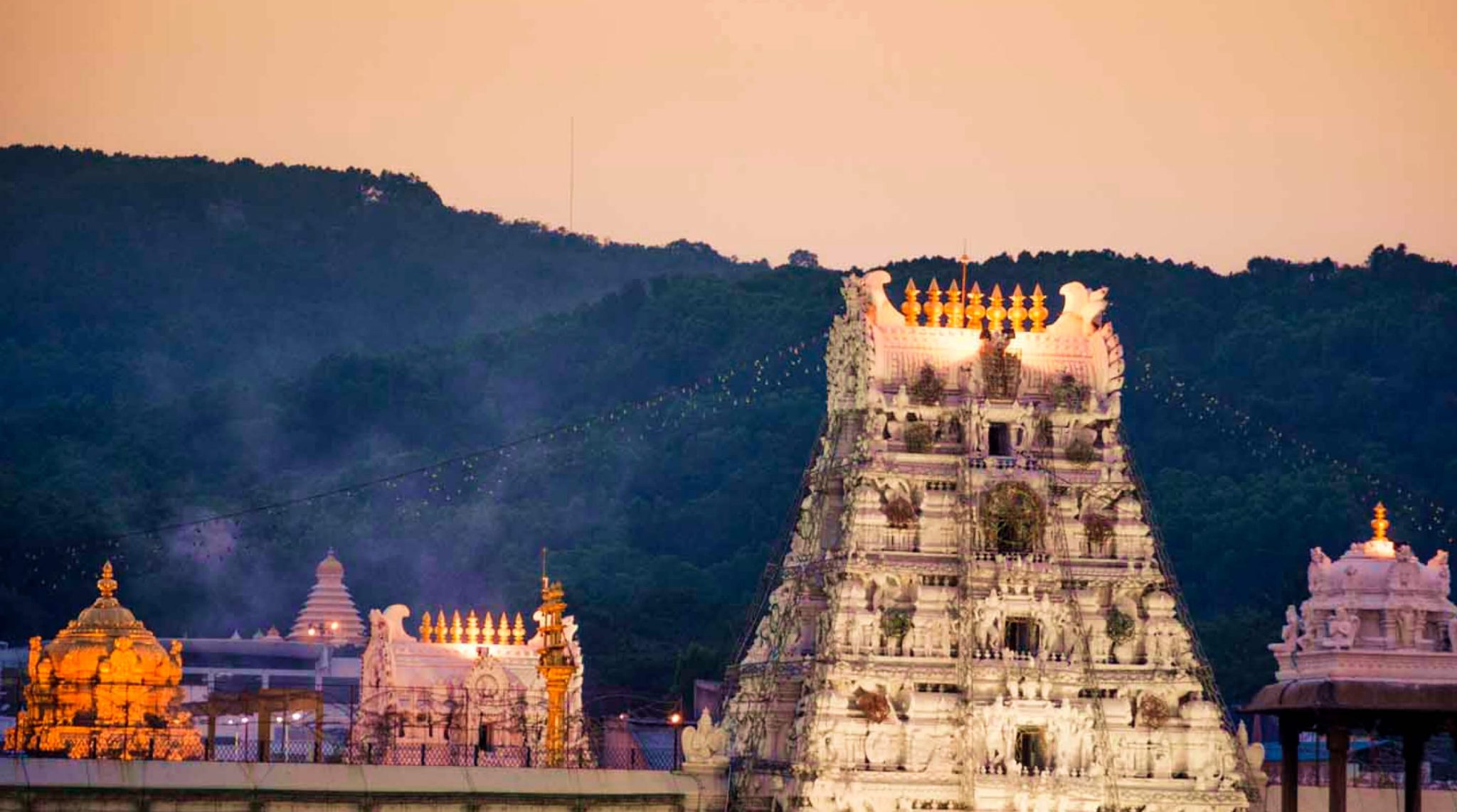
The Venkateswara Temple
The full name of the temple is Tirumala Venkateswara Devasthanam.
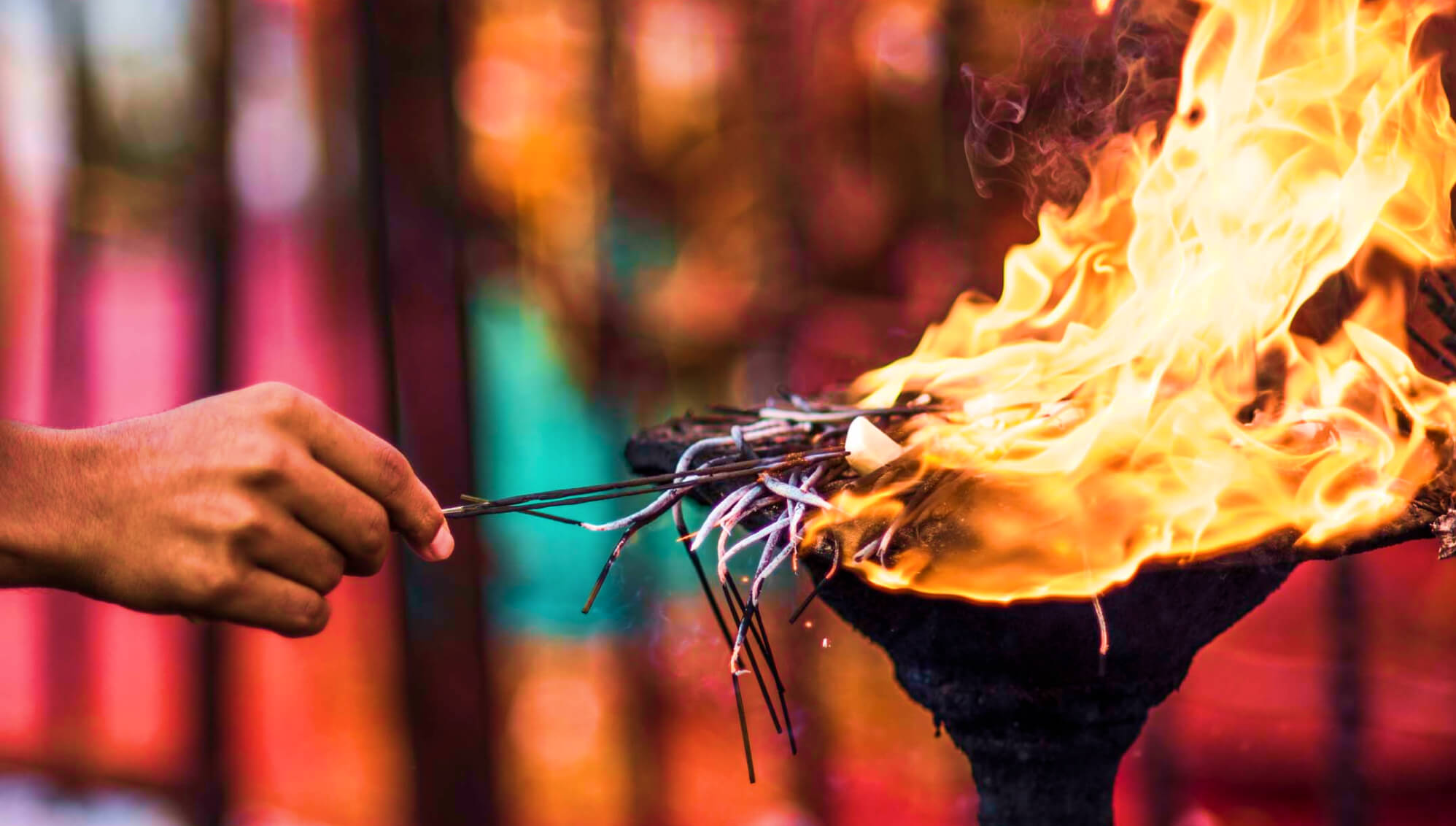
Pujas & Festivals
The religious rituals called Sevas and annual festivals never stop at the Venkateswara Temple.
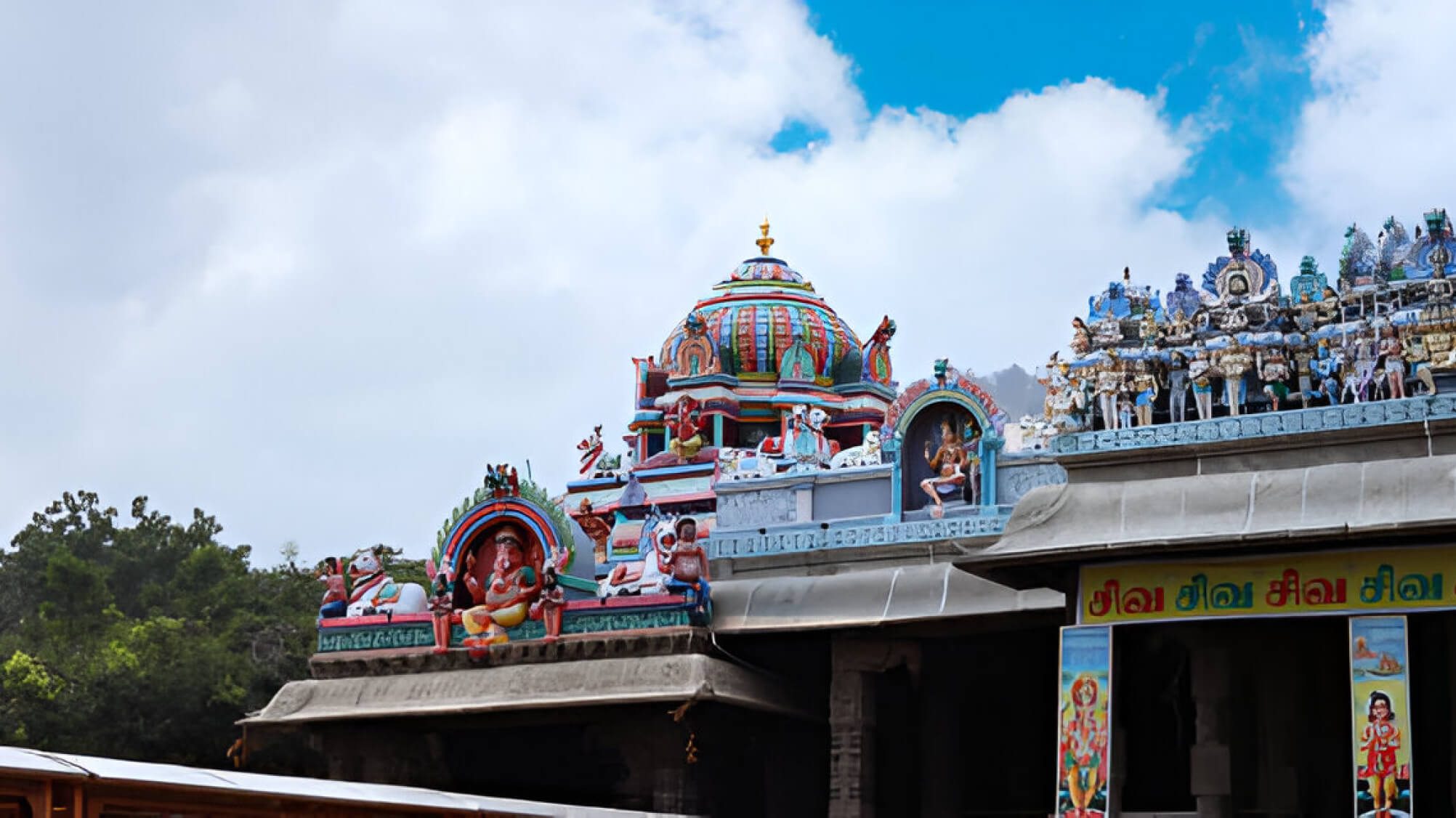
Other Places of Interest
There are a number of temples in Tirumala itself, also in the town of Tirupati and in nearby Tiruchanur.
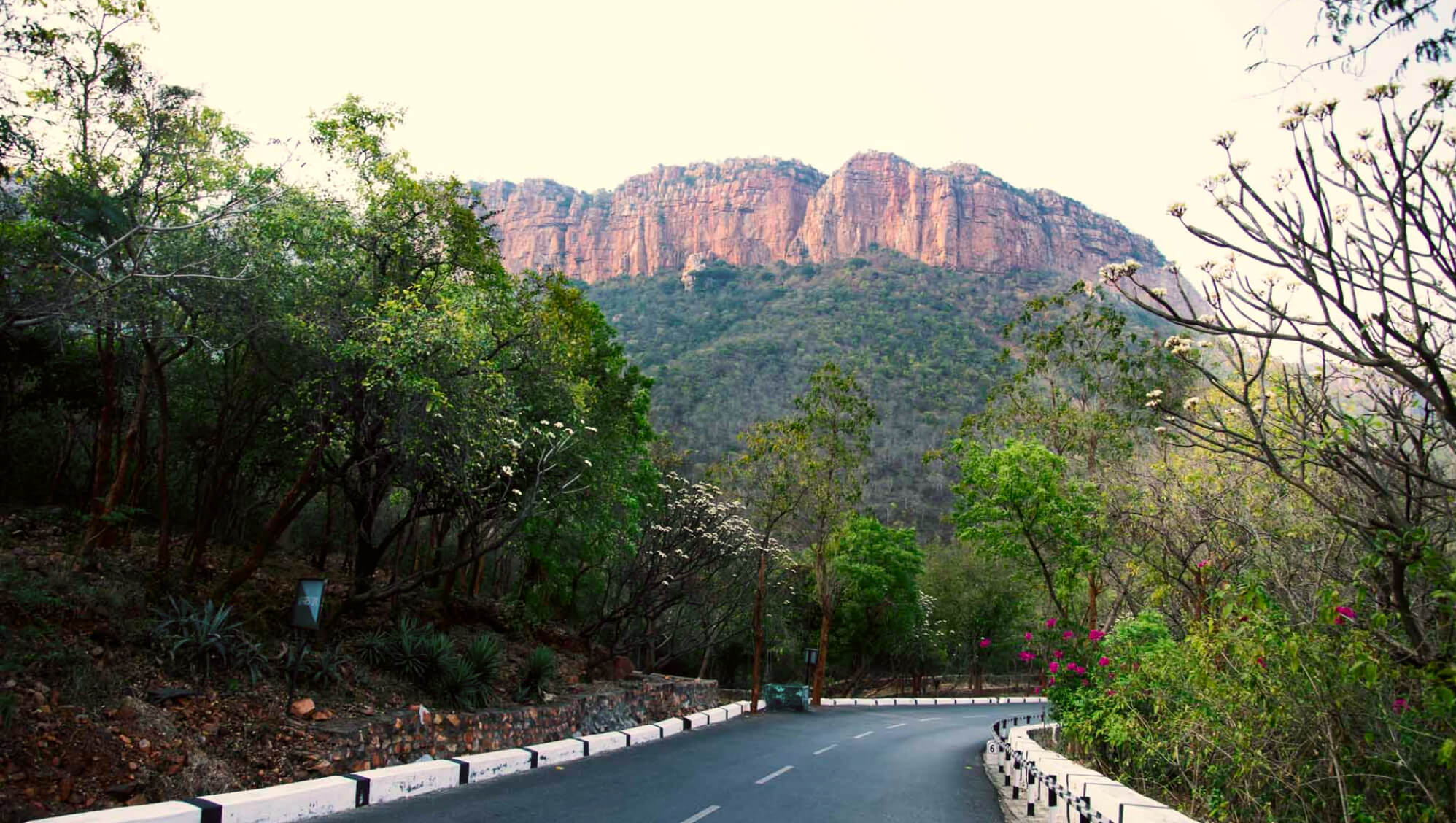
Travelling to Tirupati
Tirupati is in the state of Andhra Pradesh. The town is 581 km from Hyderabad, 252 km from Bangalore...

